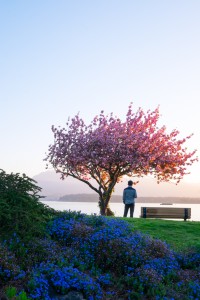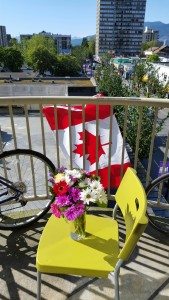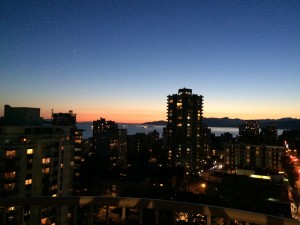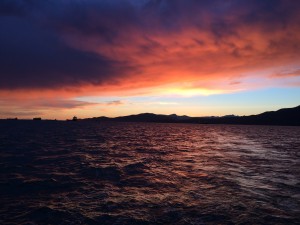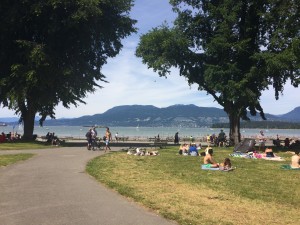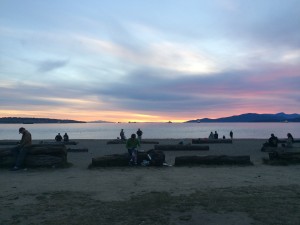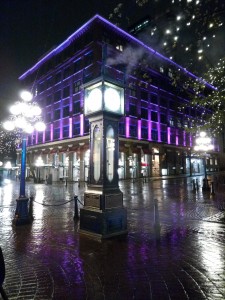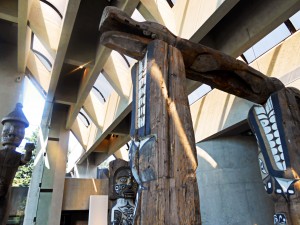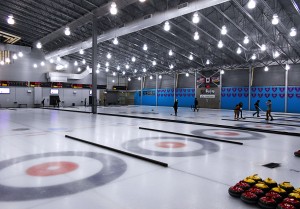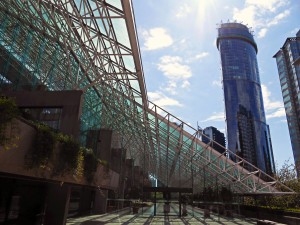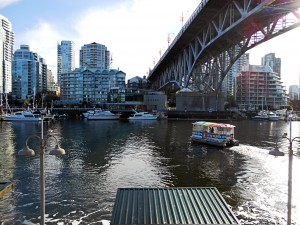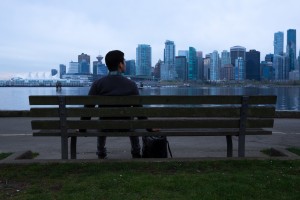 Everything, including a change of lifestyle, was a stone throw away. Lake Tahoe, in the north, with its wood cabins, tranquil sceneries, and ski resorts. San Francisco, located in the opposite direction, with its hi-‐tech offices, world-‐famous landmarks, and bustling neighborhoods. Spoiled by the weather and proximity to different settings, the shortcomings of elsewhere becomes more than a nuisance. I would enjoy the novelty of a new location for the first few days then quickly get bog down by something I find irritating. Places like D.C and Texas become too humid. Places like Seoul and Tokyo become too quick-‐ paced and too dense. This is, however, not to say that California does not share its own set of problems. My bias, as a long time residence of California, meant that there is always a “home is best” mentality. And then I was presented with Vancouver and it changed the way I perceived a place.
Everything, including a change of lifestyle, was a stone throw away. Lake Tahoe, in the north, with its wood cabins, tranquil sceneries, and ski resorts. San Francisco, located in the opposite direction, with its hi-‐tech offices, world-‐famous landmarks, and bustling neighborhoods. Spoiled by the weather and proximity to different settings, the shortcomings of elsewhere becomes more than a nuisance. I would enjoy the novelty of a new location for the first few days then quickly get bog down by something I find irritating. Places like D.C and Texas become too humid. Places like Seoul and Tokyo become too quick-‐ paced and too dense. This is, however, not to say that California does not share its own set of problems. My bias, as a long time residence of California, meant that there is always a “home is best” mentality. And then I was presented with Vancouver and it changed the way I perceived a place.
Initially, I hesitated to apply for the Vancouver program because it is simply “too close” with barely a seven hours ride from Eugene. It seems like a place that I can visit instead of studying abroad. But the prospect of learning about kinetic architecture (gizmos that transform spaces such as recessing a wall to create a larger space) and living in an urban setting was captivating. As someone wants to design residential housing in the future, I believe it is important to live in one myself. The opportunities Vancouver promised heavily outweighed my initial hesitation, so I applied.
Of all the cities that I had the fortune of living in, Vancouver may be at the top when it comes to livability. This city seems to have it all. My daily commute from my apartment in downtown 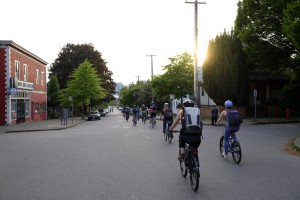 Vancouver to class on Granville Island involves a twelve minute bike ride crossing a bridge and arriving at the destination located under another bridge. Granville Island is like miniature city. During my lunchtime, I would often mingle with the locals or tourists in its large pubic market try one of the dozens of restaurants the island offers, or eat my own lunch at one of its vista points.
Vancouver to class on Granville Island involves a twelve minute bike ride crossing a bridge and arriving at the destination located under another bridge. Granville Island is like miniature city. During my lunchtime, I would often mingle with the locals or tourists in its large pubic market try one of the dozens of restaurants the island offers, or eat my own lunch at one of its vista points.
I was so curious and so fascinated by what Vancouver has to offer; I would constantly spend all of my free-‐time biking around exploring with my camera and sketchbook, capturing landscape, people, and even wildlife. I would go to different coffee shops each time so I can take a different path home. Despite going to all the major point of interests, by the end of the trip, I felt like there are still so much more nooks I have not discovered!
I took this curiosity and fascination back with me. Now I often find myself bringing a sketchbook out to sketch the sceneries and being really excited to explore familiar places with new eyes. This mentality allows me to really enjoy what a place has to offer. These places do not have the same charm that California has but they do not have to. They are very charming in their own way.
-Hieu Vo, Summer 2016
